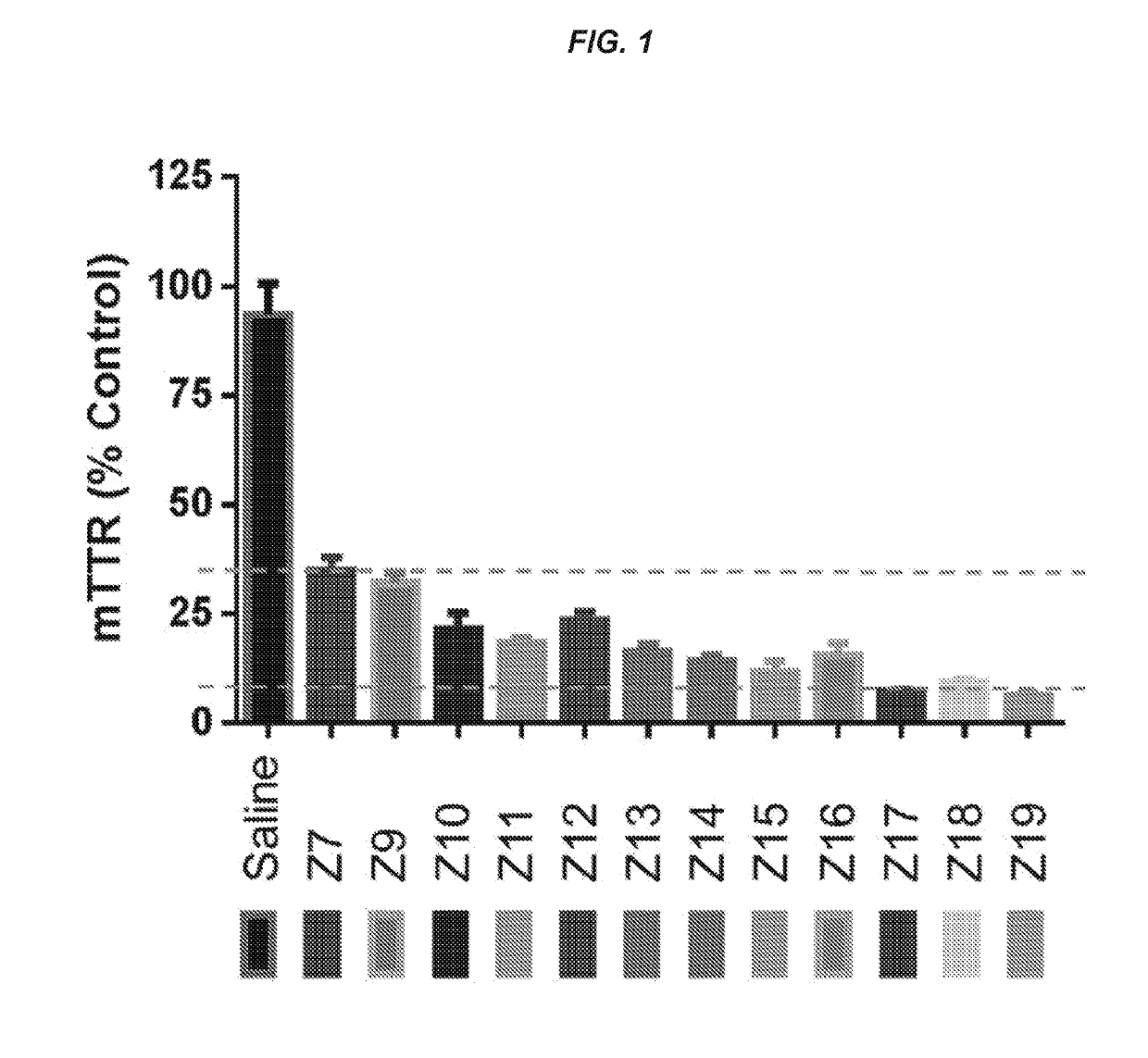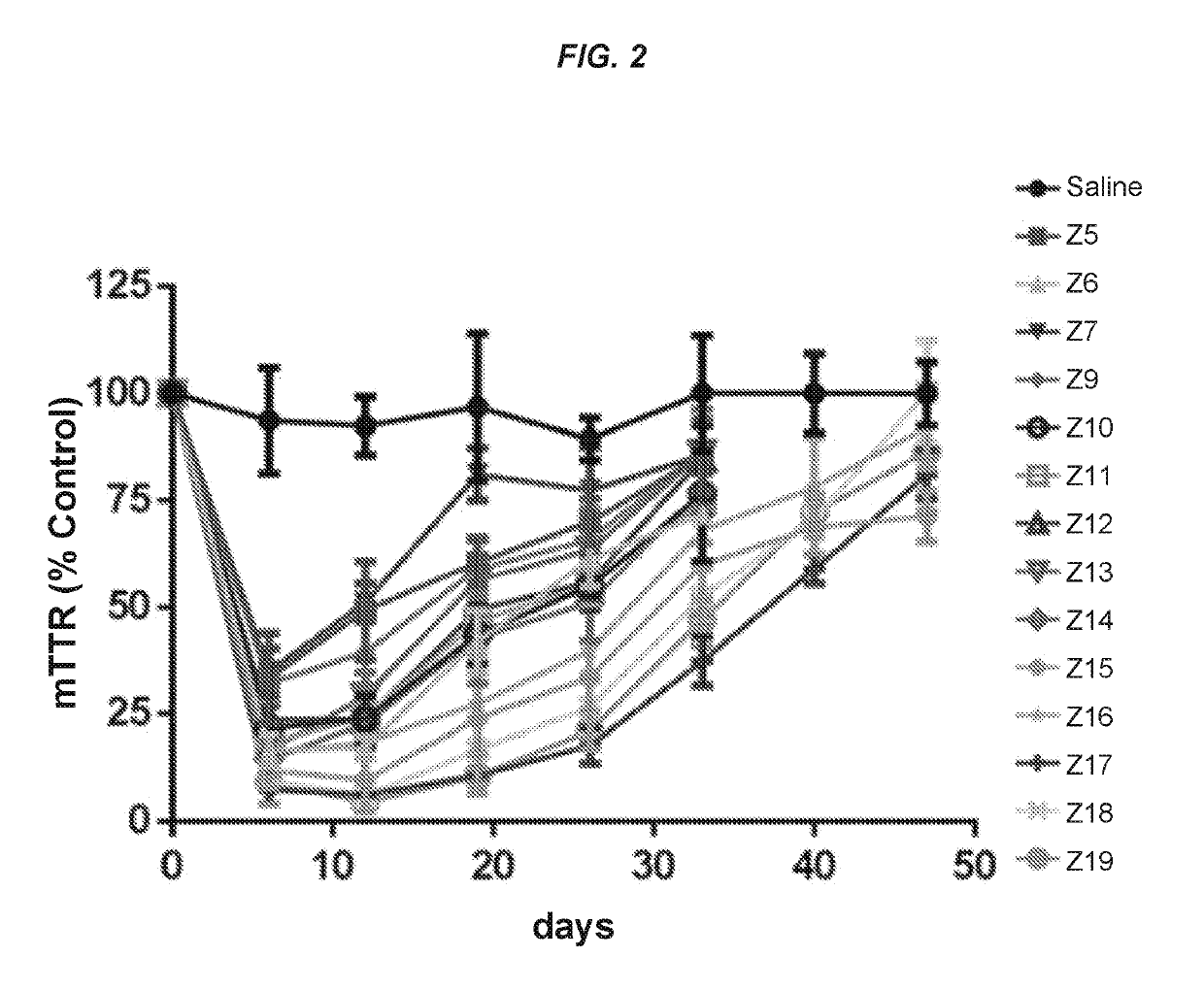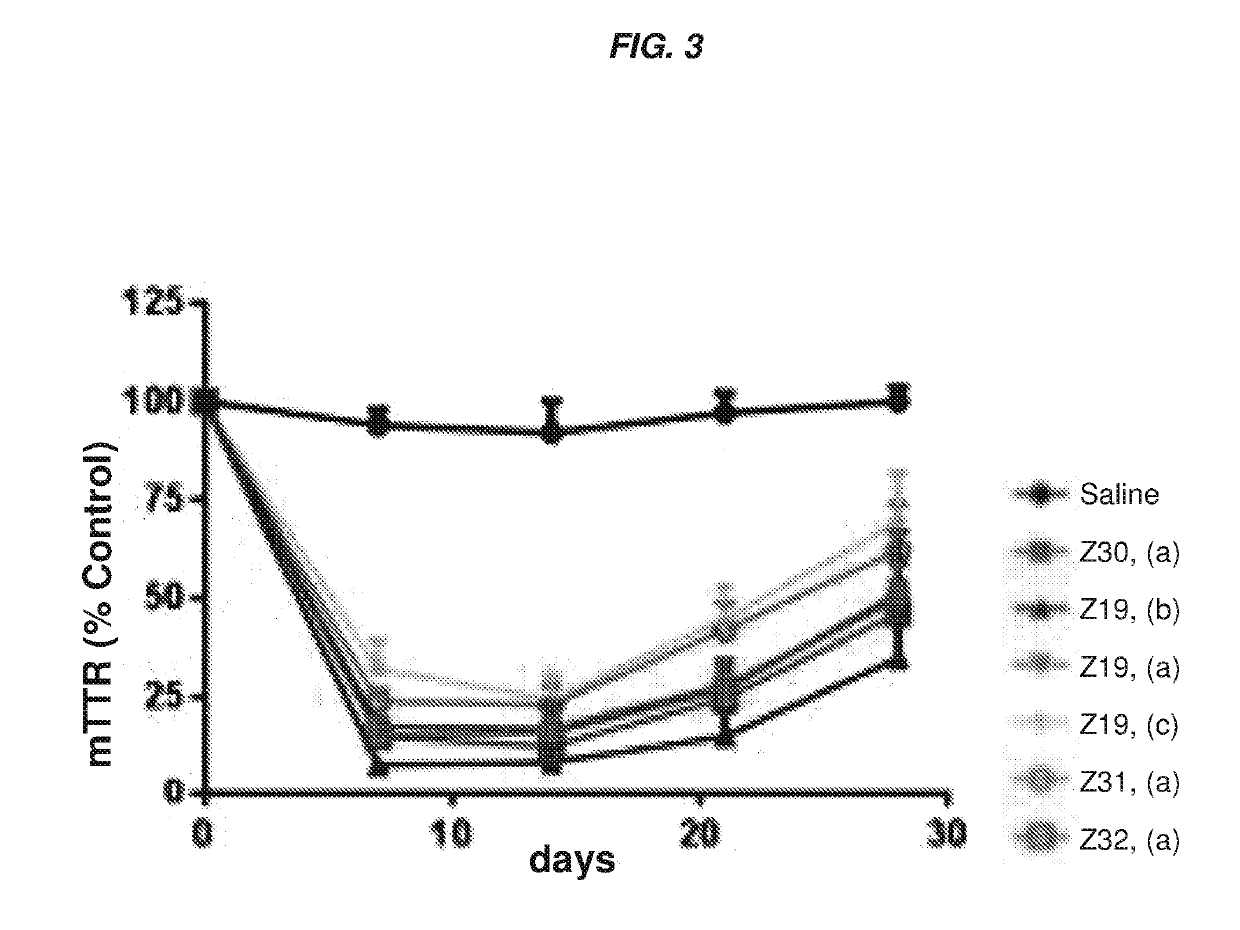Polynucleotide constructs
- Summary
- Abstract
- Description
- Claims
- Application Information
AI Technical Summary
Benefits of technology
Problems solved by technology
Method used
Image
Examples
example 1
of Intermediates
X1 and X2 Linker Synthesis—Scheme 1:
[0501]
Compound S110
[0502]
[0503]To a suspension of NaH (13.2 g, 60% in mineral oil, 230.0 mmol) in THF (40 mL) under argon at 0° C. was added a solution of diol (S109, 4.92 g, 22.0 mmol) in THF (20 mL) dropwise; the resulting mixture was warmed to room temperature and stirred for 1 h. The reaction mixture was cooled to 0° C., a solution of propargyl bromide (18.6 g, 158.4 mmol) in THF (25 mL) was added slowly, and the resulting mixture was warmed to room temperature and stirred overnight at 40° C. After the product was consumed, as observed by TLC, the reaction was quenched by dropwise addition of water at 0° C., and the resulting mixture was extracted with dichloromethane (50 mL×2). The combined organic layers were washed with brine and dried over anhydrous Na2SO4, filtered, and evaporated to give a residue, which was purified by flash silica gel column using ISCO companion (hexane / ethyl acetate, 0-30%) to give 5.92 g (89.5%) of co...
example 2
of the Polynucleotide Constructs and the Hybridized Polynucleotide Constructs
[0645]
Experimental Details
[0646]All the polynucleotide constructs synthesized were modified at 2′-ribose sugar position with 2′-F and 2′-OMe modifications to improve serum stability and to reduce off-target effects. Automated polynucleotide synthesis (1 μmol scale) was carried out with the following reagents / solvents:[0647]Oxidizer—0.02 M I2 in THF / Pyridine / H2O (60 s oxidation per cycle)[0648]Deblock—3% Trichloroacetic Acid (2×40 s deblocks per cycle)[0649]Cap Mix A—THF / Pyridine / Pac2O (60 s capping per cycle)[0650]Cap Mix B—16% Methyl imidazole in THF (60 s capping per cycle)[0651]Sulfurization—0.05 M sulfurizing reagent, 3-((N,N-dimethylaminomethylidene)amino)-3H-1,2,4-dithiazole-5-thione (DDTT), in 60% pyridine / 40% acetonitrile (360 s sulfurization per cycle)
[0652]Exceptions to standard oligonucleotide synthesis conditions were as follows:[0653]CPG supports with Q-linkers (hydroquinone-O,O′-diacetic acid ...
example 3
ts Assessing the In Vitro and In Vivo Activity of the Hybridized Polynucleotide Constructs
In Vitro Experiments
[0767]Primary mouse hepatocytes were isolated using the standard two-step collagenase perfusion technique (Li et. al. Methods Mol. Biol., 633:185-196; 2010). Briefly, a 6-10 week old female C57 / B16 mouse was anesthetized by intraperitoneal injection of a mixture of ketamine (80-100 mg / kg) / xylazine (5-10 mg / kg). The abdominal cavity was then exposed, and the visceral vena cava was cannulated using a 22G needle. The hepatic vein was severed, and the liver was immediately perfused for 5-10 min using a solution of phosphate-buffered saline (PBS) containing 0.5 mM ETDA. This solution was immediately switched to a solution of collagenase (100 IU / mL) in Dulbecco's Modified Eagle's Medium (DMEM, Gibco) for another 5-10 min. At the end of perfusion, the liver was removed, and the hepatocytes were collected in DMEM containing 10% fetal bovine serum at 4° C. The cells were then filtere...
PUM
| Property | Measurement | Unit |
|---|---|---|
| Magnetic field | aaaaa | aaaaa |
| Volume | aaaaa | aaaaa |
| Mass | aaaaa | aaaaa |
Abstract
Description
Claims
Application Information
 Login to View More
Login to View More - R&D
- Intellectual Property
- Life Sciences
- Materials
- Tech Scout
- Unparalleled Data Quality
- Higher Quality Content
- 60% Fewer Hallucinations
Browse by: Latest US Patents, China's latest patents, Technical Efficacy Thesaurus, Application Domain, Technology Topic, Popular Technical Reports.
© 2025 PatSnap. All rights reserved.Legal|Privacy policy|Modern Slavery Act Transparency Statement|Sitemap|About US| Contact US: help@patsnap.com



